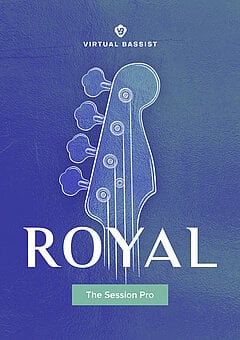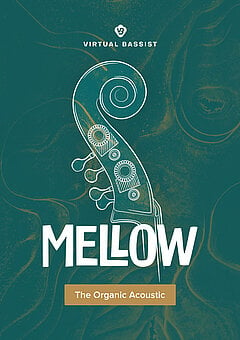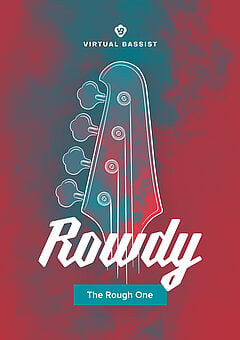How To Create a Chord Progression
The dark art of combining chords that sound great, fit your genre, and transport emotion. Learn more about chord progressions and how to expand them with Virtual Bassist 2.
MARCH 28TH, 2020
In almost any genre of music, the foundation of a song essentially comes down to a few key items, such as:
- Melody
- Lyrics
- Rhythm
- Bass
- Chords
Each deserves its own book, but here we’re going to focus on a quick hit list for everything you need to write a chord progression that’s contextual to your genre and keeps the listener hooked.
What Are Chord Progressions?
There are multiple ways to define chords, but the quick and dirty explanation we’d like to offer you is this: a group of notes played at the same time to evoke a specific feeling, usually (but not always) grouped into major or minor.
Groundbreaking explanation? Not particularly.
But for our purposes it’ll do just fine.
When you write multiple chords and combine them into a sequence, you’ve got a chord progression. The question that naturally arises now is: “But what makes a good chord progression? Just slapping any chords together isn’t going to sound very good…”
And that’s absolutely right--it’ll probably sound terrible.
What makes a chord “good” is about context. The genre, the emotion you want to create, and the location in the song (verse, bridge, chorus, etc.) are some of the big factors here.
Now let’s get a little more practical.
Chords in Major Key
To write in a major key, you might evoke an uplifting, nostalgic, or triumphant feeling. Jam or vamp a bit and play whatever chords are the most fun to play. It’s a lot easier to write when you’re inspired!
If you’re looking for a fun jumpstart to chords and music theory essentials, head over to Melodics and apply the code UJAM-MELODICS to unlock the Common Chords Progressions Course.
Practice using different chords to get from the root chord of the key to the ones you’re having the most fun with. For example, say you love playing Gsus2 in the key of C major. It feels open while still carrying a lot of forward motion back to the Cmaj chord.
Great! Let’s start there
If you want to follow along with our suggestions in real time, you can download Virtual Guitarist for free. That way, you can play a single note and select a chord, hearing the exact progressions we’re about to go through together.
Cmaj -> Fmaj -> Dmin -> Gsus2 starts off positive, turns slightly dark and then gets a little hopeful you’re going back home to Cmaj. It’s a fun progression to play, and once you’re in a groove you can start writing more progressions and building out a full song.
Chords in Minor Key
You might associate minor keys with sad, angry, or intense feelings. As always, focus on where you want to lead before you start. Is there a particular sound you like? A particular chord? Work backward from that.
For example, say we’re in E minor and you like the way Cmaj7 sounds. You might choose to write Emin -> Bmin7 -> Cmaj7 -> G7 -> Cmaj7. The in-between chords glue the progression together and stretch it out nicely.
Otherwise, it would be hard to call only two chords a progression!
How to use Chord Progressions in Your Songs: Getting Started
We’ve gone over the use of chord progressions and their function in a song of any genre, major or minor. So let’s make some!
Here’s a quick way to implement what we’ve covered so far:
- Choose your genre and key (for example, C major)
- Pick the first section you want to write (the chorus is a good place to start)
- Play with different chords in that key until you find one you’re happy with (Fmaj7 sounds quite nice)
- Determine where you want the chord progression to lead (A minor)
- Determine how you get there--after playing around a bit, maybe you like: Fmaj7 -> Dmin -> Emin -> Amin
- Create more short progressions, for example: Gmaj -> Cmaj -> Emin -> Fmaj
- Chain them together the way they sound best to you
- Repeat a few times…
- Voila! You created a full progression for one section of your song
- Repeat a few times, varying the intensity and chord progressions…
- Bam--you’ve got a whole song!
Of course it’s a little more complicated than that, but with practice and listening to many different genres of music, it will become much easier. To simplify the writing process and get extra support with chords, Captain Chords and Tonaly will make this process even more fun.
Expanding Your Progressions With Virtual Bassist
As you begin to solidify your chord progressions, the next step is to add in a bassline and beef up the root note of each chord. Writing basslines isn’t terribly complex, but it’s a skill that takes time to develop. At UJAM, we created a virtual bass VST that’s designed to produce entire basslines from each note you play.
If you play the root note of each chord, the Virtual Bassist software will suggest a bassline that supports the chord progression, without any of the trial and error of creating it yourself. It includes an electric, acoustic, and metal bass, each with a distinct timbre so you have the tools to support any genre you want to write for.
If you’re curious how to use Virtual Bassist and want to cut down the number of decisions you need to make each time you write a new song, give it a try here: Virtual Bassist 2.
Under “Play Range,” select “Chords” and choose your Key; by playing just a few notes, you’ll be able to quickly build out the foundation for any chord progression you like.
With time you’ll be able to nail basslines without any assistance--but if you want to finish songs faster and have more confidence in the final product, it’s worth checking out!
However you choose to practice your craft and create more music, always remember--having the right tools is a huge help, but nothing replaces the need to practice, listen, and always be on the hunt for inspiration!
Stay Up To Date
Sign up and we’ll send you an e-mail with product news and helpful stuff every now and then.
Defy Limits
We develop software solutions that enable people to create, consume and interact with music.




